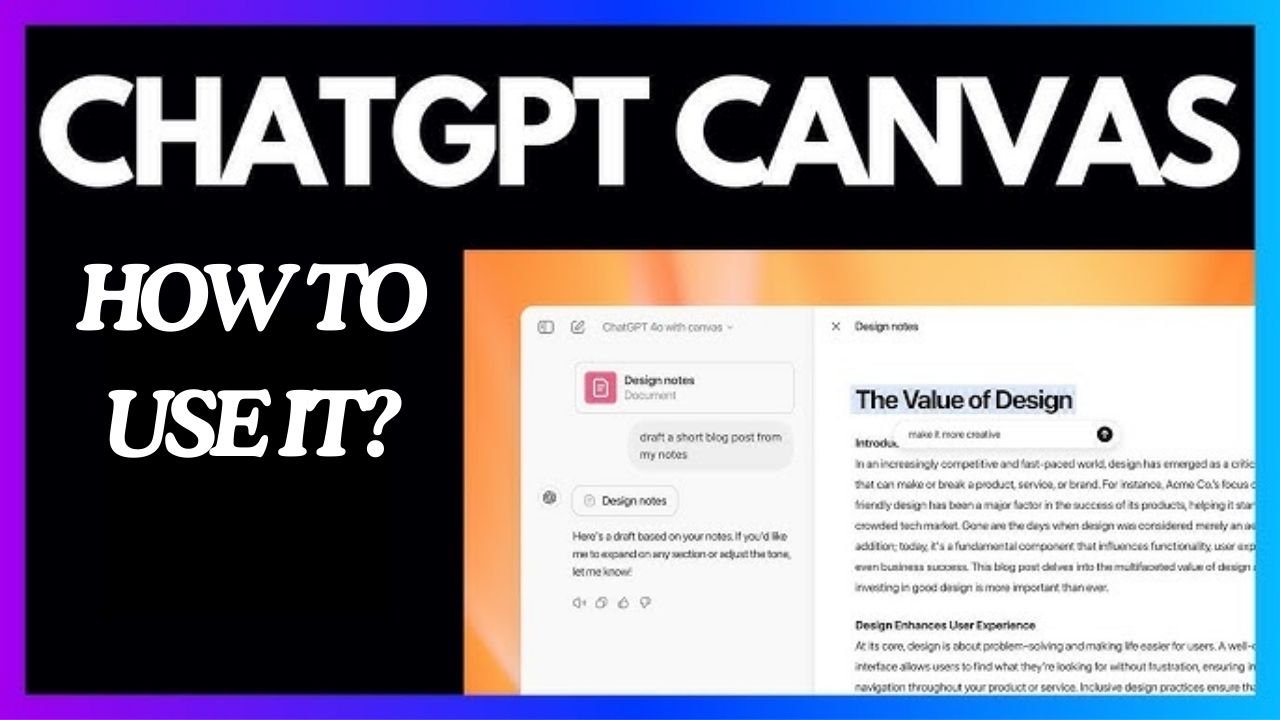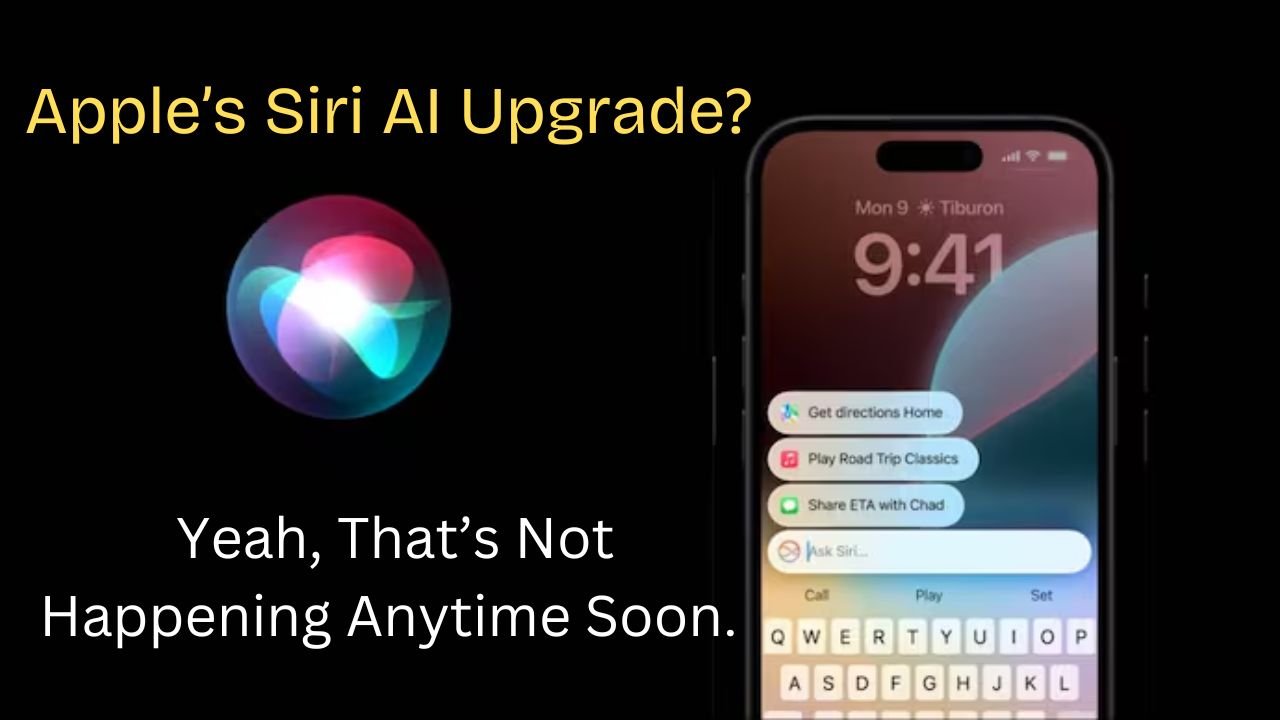OpenAI has introduced an innovative feature called Canvas in ChatGPT. This tool is designed to streamline how users work with both text and code. If you’ve ever wished for a more interactive way to collaborate with AI while working on your projects, Canvas might just be what you need. In this guide, we’ll explore how to use Canvas feature in chatgpt, how to use this new feature effectively for your writing and coding tasks.
What is Canvas?
Canvas is a new interface within ChatGPT that creates a dedicated workspace. It allows you to edit text or code separately while still conversing with ChatGPT in the main chat window. This setup enhances collaboration and helps you manage your projects more efficiently.
The Canvas feature is currently in beta and is available for ChatGPT Plus and Teams users. OpenAI plans to roll it out to all users soon.
Key Features of Canvas
Canvas comes packed with useful features designed for both writing and coding:
- Inline Suggestions: Highlight parts of your text or code to receive real-time edits or improvements from ChatGPT.
- Real-Time Editing: Make changes instantly within the workspace, allowing you to see updates live.
- Shortcuts for Writing and Coding: Access various tools that help with adjusting reading levels, shortening content, debugging code, and adding comments.
- Version Control: Easily undo changes and restore previous drafts.
- Manual and Automatic Access: Open Canvas yourself or let it pop up automatically for larger projects.
How to Access Canvas
Getting started with Canvas is straightforward. Here’s how:
- Select GPT-4o with Canvas: To access the Canvas feature, choose the “GPT-4o with Canvas” model from the model selector in ChatGPT. This option is currently available to ChatGPT Plus and Teams users.
- Manual or Automatic Access: You can manually open Canvas by typing “open a canvas” or “start a coding canvas” in the chat. For larger projects, the Canvas will automatically pop up, allowing you to start editing right away.
How To Use Canvas Feature in ChatGPT?
1: Access ChatGPT
- Log In: Start by logging into your ChatGPT account on the OpenAI website.
- Check Subscription: Ensure you are a ChatGPT Plus or Teams user, as the Canvas feature is currently in beta for these subscription levels.
2: Select the Right Model
- Open the Model Selector: At the top of the ChatGPT interface, find the model selector.
- Choose GPT-4o with Canvas: Select “GPT-4o with Canvas” from the dropdown list. This will enable the Canvas feature for your session.
3: Start a New Project
- Initiate Canvas:
- You can manually open Canvas by typing “open a canvas” or “start a coding canvas” in the chat.
- Alternatively, if your task is lengthy (like working with over 10 lines of text or code), the Canvas will automatically open when necessary.
4: Using Canvas for Writing
- Draft Your Content:
- You can write directly in the Canvas workspace or paste existing text.
- Get Inline Suggestions:
- Highlight specific text and ask ChatGPT for edits, feedback, or improvements. You can type prompts like “Can you improve this section?” or “Please suggest edits.”
- Adjust Reading Level:
- Use the “Change Reading Level” tool to adjust the complexity of your text. Specify the desired level (e.g., “Make this suitable for a 5th grader”).
- Shorten or Expand Text:
- If you need to adjust the length of your document, use the “Adjust Length” feature. Ask ChatGPT to either shorten or lengthen specific sections.
- Proofread and Polish:
- Click on “Add Final Polish” to have ChatGPT check for grammatical errors and improve clarity in your writing.
- Add Emojis and Formatting:
- For a more engaging presentation, you can use the “Add Emojis” tool to insert relevant emojis into your text.
5: Using Canvas for Coding
- Write or Paste Code:
- Just like with writing, you can input your code directly into the Canvas workspace.
- Review Your Code:
- Highlight sections of your code and ask ChatGPT for suggestions. You can say, “Can you review this code?” to get immediate feedback.
- Debugging:
- If you encounter errors, highlight the problematic sections and ask ChatGPT to “Fix Bugs.” It will identify issues and rewrite the code as needed.
- Add Comments:
- Use the “Add Comments” tool to generate inline documentation. This helps explain what different parts of your code do, making it clearer for future reference.
- Convert Code:
- If you need to port your code to a different programming language, you can use the “Port to a Language” feature. Simply specify the original and target languages (e.g., “Convert this Python code to Java”).
- Log Statements:
- For better debugging, use the “Add Logs” feature to insert logging statements that help you trace execution.
6: Managing Your Workspace
- Real-Time Collaboration:
- As you make changes, you’ll see them update instantly in the Canvas. This allows you to work smoothly without refreshing or reloading.
- Version Control:
- If you want to revert to a previous version of your work, use the undo feature to restore earlier drafts.
7: Finalizing Your Project
- Review Your Work: Go through your writing or code one last time to ensure everything is as you want it.
- Save or Export: Currently, you may need to copy and paste your final text or code to another document or IDE, as Canvas doesn’t support file uploads yet.
8: Log Out
- Finish Your Session: Once you’re done using Canvas, log out of your ChatGPT account to secure your information.
Using Canvas for Coding Projects
Canvas is particularly powerful for coding tasks. Here’s how to make the most of it:
1. Writing and Reviewing Code
When you’re coding in Canvas, you can write directly in the workspace. ChatGPT will provide inline suggestions for improvements. This can include fixing syntax errors, improving efficiency, or suggesting best practices.
2. Debugging and Bug Fixing
Canvas simplifies the debugging process. You can highlight problematic sections of your code, and ChatGPT will help identify and fix bugs. It can also insert logs and print statements to aid in understanding code execution.
3. Porting Code to Different Languages
Need to convert your code into another programming language? Canvas can do that! For instance, you can ask ChatGPT to translate Python code into JavaScript or C++. This feature is invaluable when collaborating across different platforms.
4. Adding Comments for Clarity
Enhance the readability of your code with comments. Canvas can automatically generate inline documentation, making it easier for you and your team to follow the logic behind the code.
5. Real-Time Code Collaboration
Similar to writing tasks, Canvas allows for real-time collaboration on coding projects. You can work on your code, ask ChatGPT for suggestions, and see changes reflected instantly in the workspace.
Using Canvas for Writing Projects
Canvas also provides a great platform for enhancing your writing. Here’s how to utilize it effectively:
1. Drafting and Editing
When you start a writing project, you can write directly in Canvas or paste your draft. ChatGPT will offer inline suggestions for grammar, tone adjustments, and content expansion. You can highlight specific areas to ask for focused feedback.
2. Adjusting Reading Level
A standout feature of Canvas is the ability to adjust the reading level of your writing. You can ask ChatGPT to simplify your text for younger audiences or make it more complex for professionals, ensuring your content suits its intended audience.
3. Content Shortening and Expanding
Need to fit a specific word count? Canvas can help you shorten or expand sections of your text. For instance, you can ask ChatGPT to condense a lengthy paragraph or add more detail where necessary.
4. Polishing for Grammar and Clarity
Canvas automatically reviews your writing for grammatical errors and clarity. This feature is perfect for finalizing reports, blog posts, or any professional writing that requires a polished touch.
5. Adding Visual Appeal
While Canvas doesn’t currently support image insertion, you can ask ChatGPT to suggest using emojis or formatting tips to make your text more engaging, especially for informal writing.
Limitations of Canvas
While Canvas offers many exciting features, there are some limitations:
- No Support for Images and File Uploads: Currently, you cannot insert or manipulate images within the workspace, which can be a drawback for visual content.
- Not Available on Mobile: Canvas is accessible only via the web version of ChatGPT. Users accessing ChatGPT through mobile apps won’t be able to use this feature, although they can view their Canvas projects.
- Limited Collaboration with Others: Canvas does not yet support direct collaboration between multiple users, meaning you cannot share your Canvas project for real-time editing or feedback.
What’s Coming Next?
OpenAI plans to improve Canvas by adding more advanced tools and features. Upcoming updates may include:
- Support for Images and Media Files: This will enable users to incorporate visuals into their projects, enhancing the overall quality of documents.
- Mobile and Multi-Platform Access: Expanding Canvas to mobile devices will make it more accessible.
- Shared Workspace: Future updates may introduce collaborative features that allow multiple users to work on the same Canvas project in real time.
Final Thoughts
The Canvas feature in ChatGPT represents a significant advancement in how we interact with AI for both writing and coding tasks. It creates a workspace that enables real-time editing, feedback, and collaboration. As OpenAI continues to refine this tool, it will undoubtedly become an essential resource for writers and developers alike.
If you’re a ChatGPT Plus or Teams user, take advantage of the Canvas feature today. Experiment with its capabilities, and watch how it enhances your productivity and creativity!


